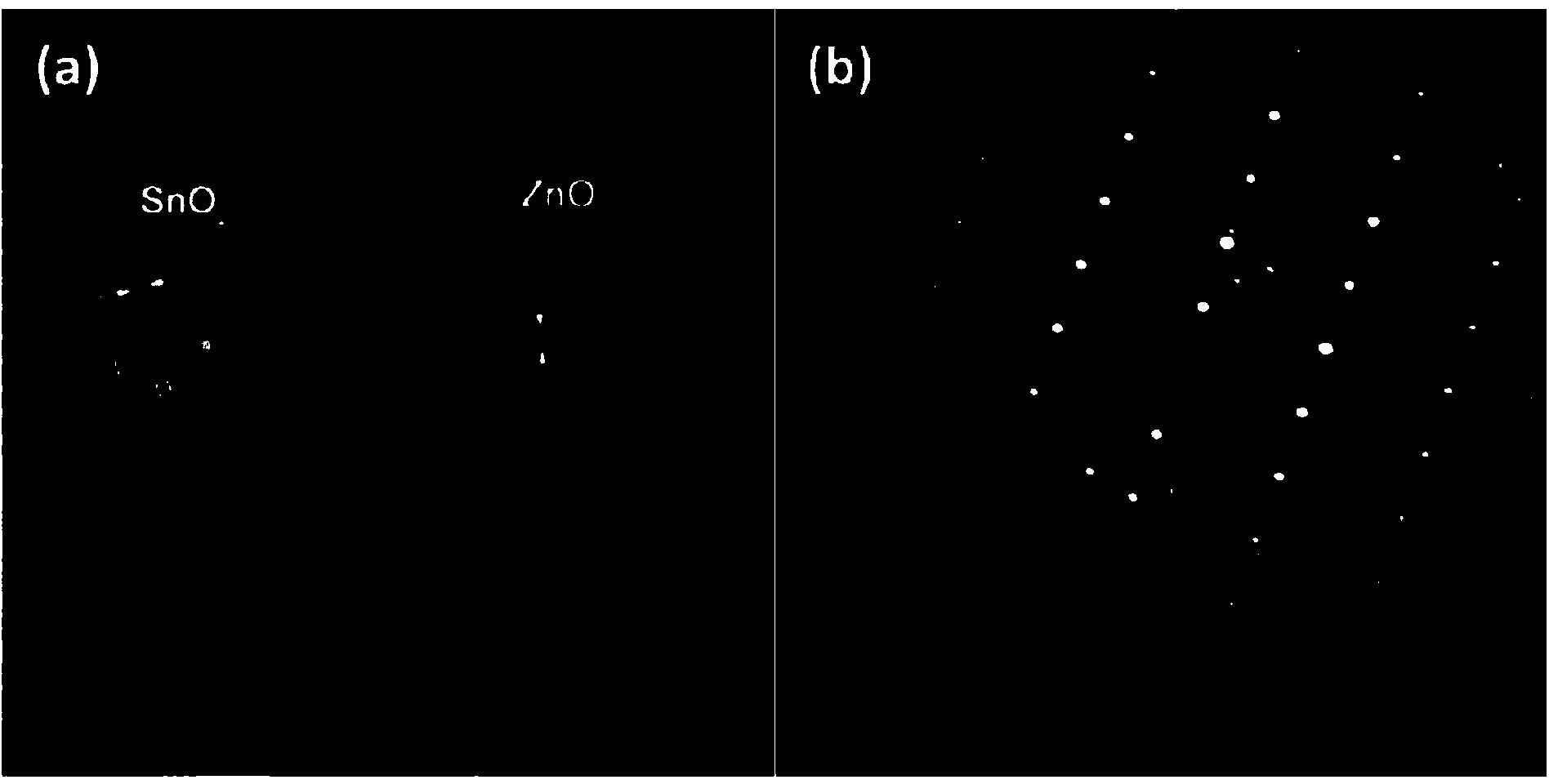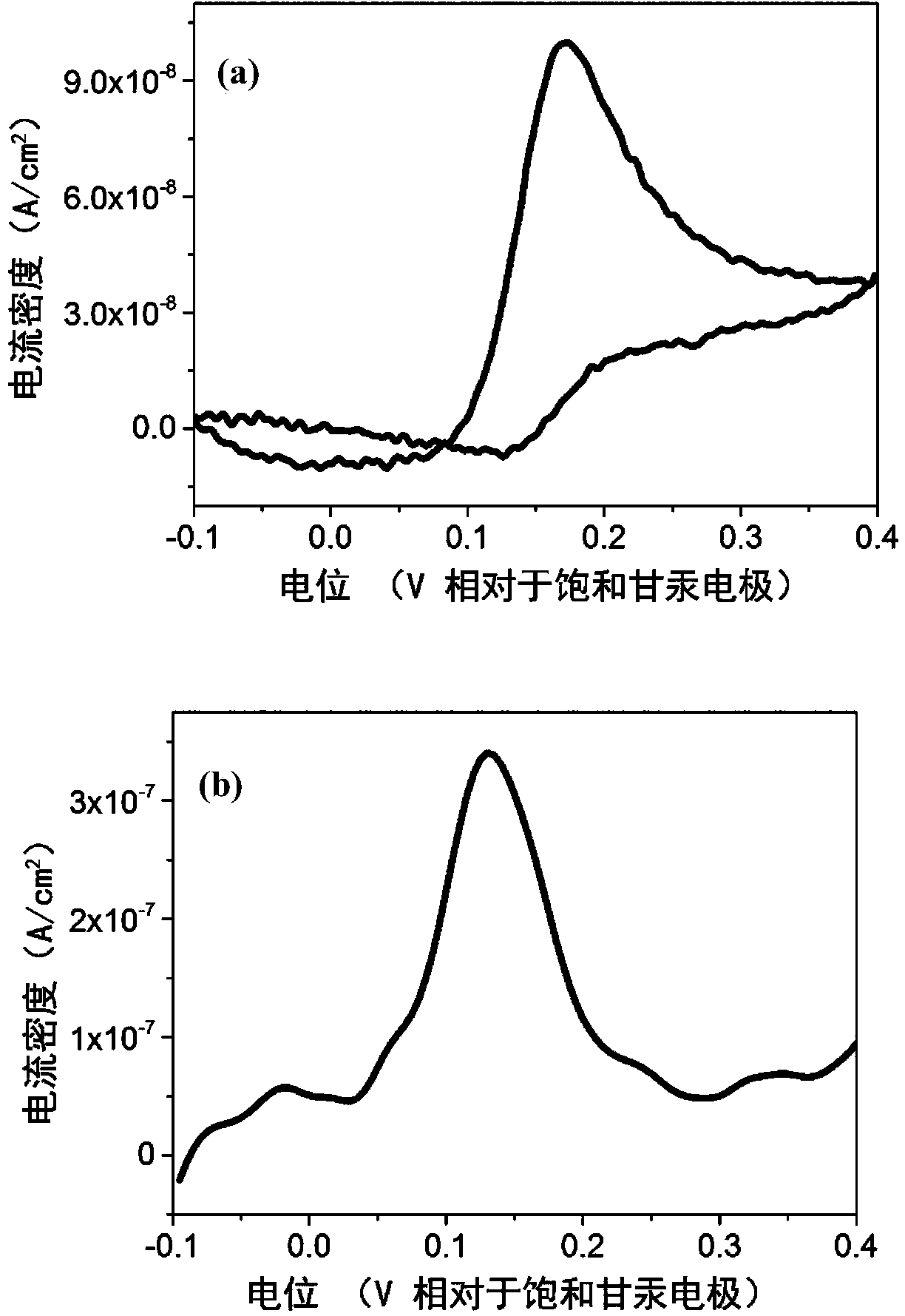Perfluorinated sulfonic acid resin modified SnO2-coated ZnO nanotube array electrode used for detecting dopamine and application of nanotube array electrode
A technology of perfluorosulfonic acid resin and nanotube array, which is applied in the direction of material electrochemical variables, etc., can solve the problems of disordered distribution of carbon nanotubes and failure to fully exert their functions, and achieve the effect of improving performance
- Summary
- Abstract
- Description
- Claims
- Application Information
AI Technical Summary
Problems solved by technology
Method used
Image
Examples
Embodiment 1
[0024] In the three-electrode system, a platinum plate and a saturated calomel electrode were used as the counter electrode and a reference electrode, respectively, and ITO glass or FTO glass was used as the working electrode. The electrolyte solution is an aqueous solution containing 5mM zinc nitrate and 5mM ammonium acetate. The electrolyte temperature was raised to and maintained at 85°C by means of a water bath. Using an electrochemical workstation (CHI660C, Shanghai Chenhua Instrument Co., Ltd.) to apply a potential of -1V to the working electrode for 3 hours, the ZnO nanorod array grown on ITO glass or FTO glass was obtained; this ZnO nanorod array was placed on The single crystal ZnO nanotube array is obtained by immersing for 1.5 hours in an aqueous solution of sodium hydroxide with a concentration of 0.2M and a temperature of 85°C. Place the ITO glass or FTO glass with the single crystal ZnO nanotube array in the porcelain boat, put it in the low-temperature central ...
Embodiment 2
[0026] The Nafion modified polycrystalline SnO grown vertically on the ITO glass substrate obtained in Example 1 2 The nanoparticle film-coated single crystal ZnO nanotube array is used as the working electrode, the platinum plate electrode is used as the counter electrode, and the saturated calomel electrode is used as the reference electrode to form a three-electrode electrochemical system. The detection object is a PBS solution (pH=7.4) containing 0.1 μM dopamine. By electrochemical workstation, utilize cyclic voltammetry (CV) and differential pulse voltmetry (DPV) to test the electrochemical response of detection object, the result is as follows image 3 shown.
Embodiment 3
[0028] The Nafion modified polycrystalline SnO grown vertically on the ITO glass substrate obtained in Example 1 2 The nanoparticle film-coated single crystal ZnO nanotube array is used as the working electrode, the platinum plate electrode is used as the counter electrode, and the saturated calomel electrode is used as the reference electrode to form a three-electrode electrochemical system. The detection object is a PBS solution (pH=7.4) containing 2 μM dopamine. By electrochemical workstation, utilize cyclic voltammetry (CV) and differential pulse voltmetry (DPV) to test the electrochemical response of detection object, the result is as follows Figure 4 shown.
PUM
 Login to View More
Login to View More Abstract
Description
Claims
Application Information
 Login to View More
Login to View More - R&D
- Intellectual Property
- Life Sciences
- Materials
- Tech Scout
- Unparalleled Data Quality
- Higher Quality Content
- 60% Fewer Hallucinations
Browse by: Latest US Patents, China's latest patents, Technical Efficacy Thesaurus, Application Domain, Technology Topic, Popular Technical Reports.
© 2025 PatSnap. All rights reserved.Legal|Privacy policy|Modern Slavery Act Transparency Statement|Sitemap|About US| Contact US: help@patsnap.com



